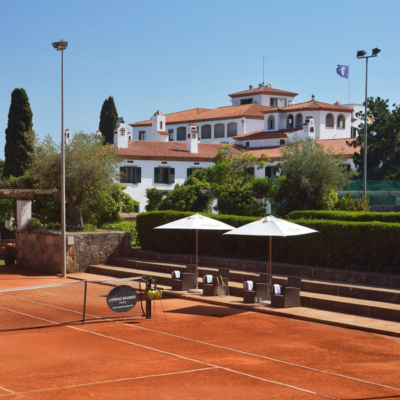Ireland, alongside the rest of the planet, experiences climate extremes that are as baffling as they are terrifying, says Holly Hughes, who asks how’s the weather, really …
As Irish people, we are genetically predisposed to obsess about the weather. It’s a national pastime, a small talk safety net, reliable salutation. However, our meteorological interest is fast transcending the conversational and becoming urgent as Ireland, alongside the rest of the planet, experiences climate extremes that are as baffling as they are terrifying.
Last year was the warmest year on record for Ireland, as it was for at least 21 other countries. Global temperatures in every month between June and December set new monthly records. The global average temperature for 2023 broke records and warming, at 1.56°C, exceeded the 1.5°C “safe” limit set by climate scientists to prevent the worst climate damage.
We also experienced some of our worst storms and rainiest months. Both March and July (as if you need to be reminded) were the wettest ever recorded. Cork Airport recorded its highest ever rainfall in October as Storm Babet wreaked havoc in the Southwest. Floods in Midleton, Co Cork were particularly devastating, leaving almost €200m worth of damage in their wake. Climate change was a driving force in the scale and likelihood of these floods.
“An attribution study conducted by World Weather Attribution and involving Met Éireann, found that those two days of high rainfall were more than doubled in likelihood and increased in intensity by approximately 13 per cent, due to global warming,” Tido Semmler, a Senior Climate Scientist at Met Éireann’s Climate Services, tells me.
Tido and his colleagues collect, analyse, and disseminate high quality climate data to help us understand and prepare for changes in weather patterns because, as is increasingly obvious as we experience another year of record-breaking weather statistics (spring was once again one of the wettest and warmest on record, according to Met Éireann), weather changes are most definitely occurring. “The likelihood of extreme precipitation and high temperatures have both increased due to the 1.1°C degree warming that Ireland has experienced to date,” says Tido.
“Higher temperatures could also mean a longer growing season for farmers which could increase grass yields and even enable earlier harvesting.”
“These warmer temperatures will change Irish rainfall patterns, increasing dry periods and the intensity of rainfall events as well as storm surges and coastal flooding risks around Irish coasts,” he continues. “We can also expect a rise in compound events. By that I mean, multiple climate events occurring at the same time – such as heavy rainfall coinciding with high tides.”
As we often do in Ireland when we hear of bad weather, I think of two things: laundry and the farmers. What will this mean for our national pastime (assessing the great drying outside) and an important national industry?
According to the National Adaptation Framework published this year, which outlines a whole of government and society approach to climate change, the projected temperature increases could increase vector-borne diseases affecting livestock, such as the Bluetongue virus, and bring new diseases. More frequent heatwaves may lead to heat stress (for both animals and farmers) while less summer rain and more droughts could cause water stress for animals and cracked soils which stunt crop growth and reduce the efficiency of fertilisers, exposing groundwater to pesticides.
However, higher temperatures could also mean a longer growing season for farmers, which could increase grass yields and even enable earlier harvesting. Warmer temperatures could herald the introduction of new crop varieties to Ireland. Meanwhile, less frost could help reduce damage to spring crops and cold stress to livestock, as well as improve horticulture conditions.
“Overall, you could say it’s a zero-sum-game,” Cormac Gebruers, Group External Affairs Manager of DP Energy Group – a Cork-based developer of renewable energy projects – tells me. Beset by visions of an apocalyptic world of roiling seas and gale-force winds, I reached out to him, looking for a silver lining. Surely storm-churning oceans and howling squalls are, if nothing else, a good thing for renewable energy generation?
“More precipitation means it’s going to be duller which might mean solar energy will be harder to generate,” Cormac says. “On the other hand, looking at hydro energy, more water can only be a good thing! However, one challenge we’re seeing with hydro energy is that a lot of the infrastructure already in place wasn’t necessarily designed to deal with the water levels we’re experiencing. To adapt to higher – or in places like California, lower – water levels, we’ll need to design hydro systems that can support them.”
Last year, the most ever renewable energy was generated in Ireland, thanks to wind and solar power. Wind farms provided 34.6 per cent of Ireland’s electricity – a new record and one that Cormac thinks will continue to be improved upon. “We have one of the best wind resources in the world in Ireland and I don’t think climate change is really going to affect that.”
Perhaps, then, it’s not so much the changes in our future seasons that are important but rather how we adapt to them. “What you really need for renewable generation is consistent weather conditions,” Cormac continues. “A steady wind is a very good wind but obviously that’s not how weather works. Fluctuating conditions will probably only intensify in the coming years. So what we really need in Ireland is the ability to store energy generated from the days the wind blows and the sun shines and save it for the days when they don’t.”
“At the moment, any renewable energy generated in Ireland that isn’t used immediately is effectively dumped. It’s a huge waste. What we need to do – and it’s a global problem we’re all working on – is to be able to store that excessive energy and save it.” I resist the temptation to add, “For a rainy day”.
Cormac speaks of a world where we can work with our weather to improve our climate resilience, while in sectors like agriculture there’s hope – we simply must believe it! – of symbiotic adaptation and growth between us and a changing climate. As for Tido, he posits that a measure of the weather is at our mercy – that we have a collective power to mitigate and prevent the worst of these extreme events. “It depends on us if more extreme events like these will accelerate or not.”
Once again, it’s about every drop we put in our oceans. “The earlier we act to reduce global emissions, the more likely it is that we avoid the most adverse impacts of climate change.” @holly_hughes_words











